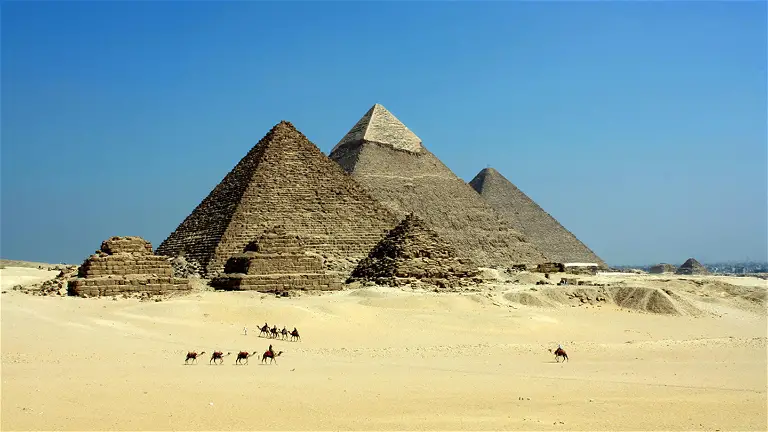
The pyramids of Egypt are considered the great jewel in the country’s crown. For the inhabitants of the region, it is the real jewel in the crown. It attracts tons of tourism and also shows a millenary culture that has thousands of years behind it when in Europe societies still lived in much more rudimentary ways. The Egyptians were a society with an advanced science and could develop works such as the Pyramids or the Sphinx of Egypt. Although it is true that much of what we know about their culture is thanks to the importance they gave to the funerary field. Something that has always been unknown has been the way in which the Pyramids were built, but now everything points to this mystery being solved.
The Great Wonder of the Ancient World
According to Science Alert, a group of scientists has been able to find something that until now had gone unnoticed: an ancient branch of the Nile River that has been buried under the desert sands for millennia. With a length of 64 kilometers, this disappeared riverbed reached more than 100 pyramid complexes, including the most famous, that of Giza.
This information would be the key to settling the eternal dilemma of how the Egyptians could transport the gigantic rocks that were used to build these wonderful funerary architectures. Therefore, this incredible discovery has turned out to be crucial to understanding the construction of the pyramids between 4,700 and 3,700 years ago. Although the discovery of the riverbed has been current, many researchers had already theorized about this refined form of river transport that allowed large volumes to be moved thanks to the river that allowed the prosperity of the country. This branch or possible tributary of the Nile was near Memphis, the capital of Lower Egypt and a region very close to the Great Pyramid of Giza, which together with those of Cheops, Chephren and Mycerinus, are the most impressive and most visited in the country. In fact, already in ancient times they were considered wonders of the world, and they are the only ones that have survived the passage of time compared to other more ephemeral ones such as the Gardens of Babylon.
Referred to as Ahramat (which means pyramids in Arabic), the river has been discovered thanks to radar satellite imagery, which has allowed them to penetrate the desert sands and cultivated areas that still exist in the area to find the buried river and many ancient structures that could be used to find new finds of the culture of the Ancient Age. It has always been believed that the Nile served as the gateway to the temples that formed the pyramids, with a monumental entrance from which one could reach by boat. With the discovery of the Ahramat, everything points to the fact that it was in this way that the members of the Egyptian nobility moved when they went to pay homage to the tombs of their ancestors.
It was only a kilometer from the pyramids and began to disappear approximately 4,200 years ago. Thus, on this river they built these monumental ports and served to bring the heaviest materials that came from the south and that would have been impossible to transport by land. Weather conditions changed over the years and this forced pharaohs and members of the high aristocracy to move their funerary centers or to innovate in the forms of burial. It should be noted that pyramids are not the most common form of burial for pharaohs, who were buried in other structures, the most common being the mastaba.



Comments